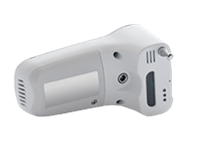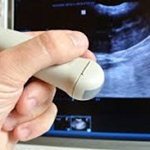Guide to Vascular Visualization
Several technologies have been introduced to the vascular access world that have a great potential to reduce the number of peripheral IV sticks required to insert a peripheral catheter and decrease the number of PICC or central line insertions, due to difficult peripheral access. The use of any type of vascular visualization equipment does require education and training on the particular device chosen. The clinician choosing vascular visualization should know the appropriate indications for use, contraindications and manufacturer’s directions for use, as well as demonstration of competency in the use of the device.
Please note: These lists are for reference and educational use only. Pedagogy does not recommend the use of any product or product manufacturer.
Please note: These lists are for reference and educational use only. Pedagogy does not recommend the use of any product or product manufacturer.
Guide to Vascular Visualization
Trans-illuminator and Reflective Technology
In medicine trans-illumination generally refers to the transmission of light through tissues of the body. A common example is the transmission of light through fingers, producing a red glow due to red blood cells absorbing other wavelengths of light.
| Photo | Product |
 |
Venoscope® II |
  |
Illumivein® |
 |
Wee-Sight Transilluminator |
  |
Veinlite LED+ ® |
 |
Veinlite NEO® |
 |
Veinlite PEDI2® |
Infrared Technologies
Infrared vision is the capability of biological or artificial systems to detect infrared radiation. In general, the near infrared vascular visualization technologies send out infrared light and project a reflected image onto the patient, that allows visualization of the veins beneath the skin.| Photo | Product |
 |
AccuVein® AV500 |
 |
VeinViewer® |
 |
IV-eye® |
  |
AIMVEIN |
Ultrasound
Ultrasound produces sound waves that are beamed into the body causing return echoes that are recorded to "visualize" structures beneath the skin. The ability to measure different echoes reflected from a variety of tissues allows a shadow picture to be constructed. The technology is especially accurate at seeing the interface between solid and fluid filled spaces.
| Photo | Product |
 |
Manufacturers too numerous to list! |
Are you a manufacturer of a Vascular Visualization Device that isn't listed here? Please contact us at support@pedagogyeducation.com and we would be more than happy to list your device as well.